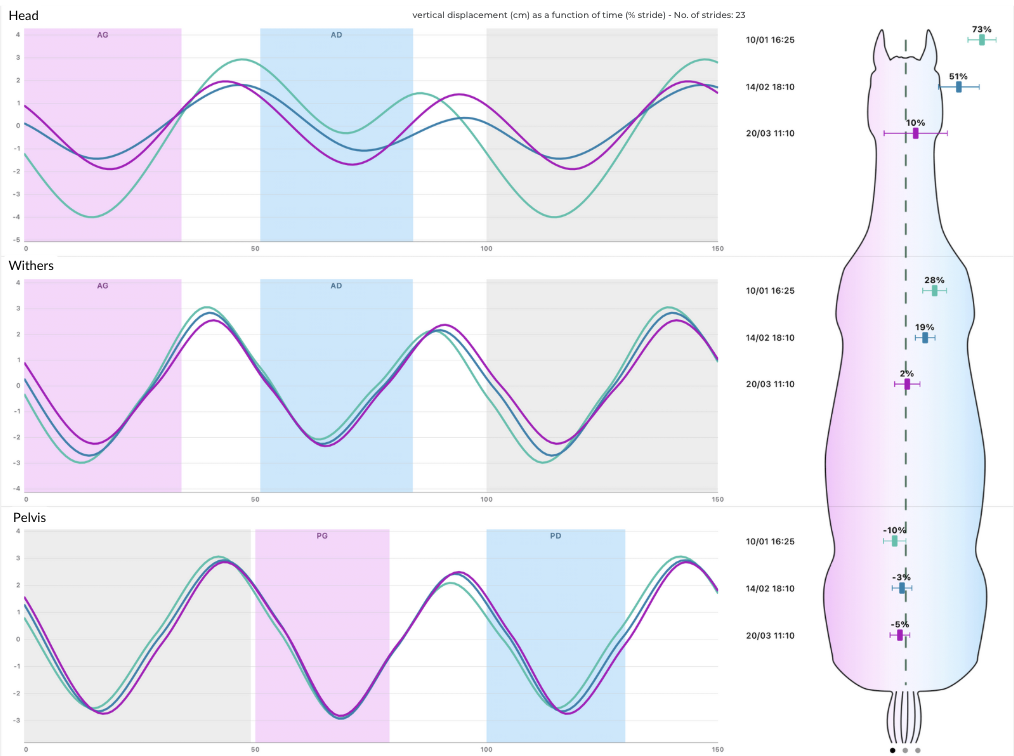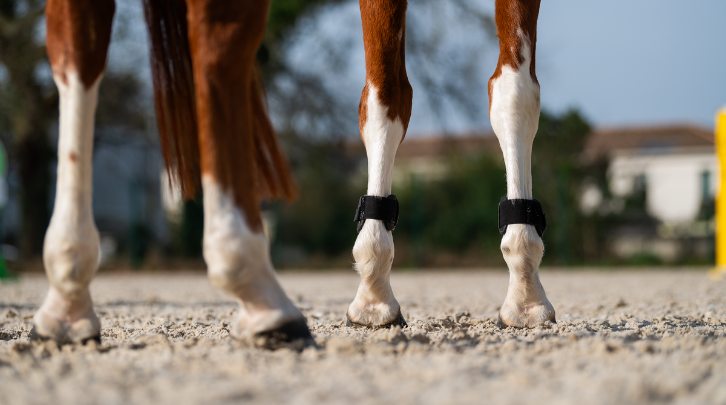Our equine locomotion quantification solution, EQUISYM®, is evolving! After several months of research and development, we are launching a new feature for EQUISYM®. Better adapted to veterinarian practice, this modular version (with 3, 5, or 7 sensors) uses machine learning to analyse gaits and ground contact phases. Thanks to the collected data, asymmetry indices are calculated to provide an objective evaluation of locomotion and aid the detection of lameness.
On the agenda for this article:
- The origin of EQUISYM®
- The new modular version
- Concrete example of an EQUISYM® case using the 3 and 7 sensors version
- What’s next?
Watch the video presentation of the new EQUISYM® configuration: available here
The origin of EQUISYM®
EQUISYM® was born from a need expressed by veterinarians to be able to measure locomotion asymmetries in horses to help diagnose lameness. This work was carried out in close collaboration with researchers and clinicians from the CIRALE (the Normandy equine centre of the École Nationale Vétérinaire d’Alfort). Initially, examinations could only be carried out using all seven sensors, placed on the head, withers, croup, and limbs. The tool allows for a precise study of locomotor asymmetries. To achieve this, at least five trot strides are needed to generate curves and indices using a signal processing algorithm.

Screenshot taken from the Dashboard Vet
The new modular version
In order to adapt to a greater variety of horse profiles, we have improved our processing approach by shifting from traditional signal processing methods to machine learning models. Signal processing algorithms work very well in the majority of cases, but some horses have unique locomotion patterns that can be challenging for traditional methods.
Thanks to machine learning, we developed EQUISYM® with 3, 5, or 7 sensors. This allows you to use the tool in its light version with 3 sensors, intermediate version with 5 sensors, or full version with 7 sensors. This development aims to provide greater flexibility for professionals with varying needs.
- 3 sensors – light configuration: ultra-fast installation in only 30 seconds, perfect for an initial assessment or post-treatment follow-up.
- 5 sensors – intermediate configuration: a more refined analysis while avoiding the need to equip the hind limbs. Ideal for sensitive horses, such as racehorses, where sensors may influence locomotion.
- 7 sensors – full configuration: maximum precision, optimal for detecting complex or multiple lameness cases.
In all three configurations, the analysis remains focused on the vertical elevation of the topline. Sensors placed on the limbs add extra precision regarding ground support phases. Without them, the analysis is still relevant but slightly less precise.
Concrete example of an EQUISYM® case using the 3 and 7 sensors version
The impact of an ill-fitting saddle on locomotion
Arion is an 11-year-old quarter horse stallion used for leisure and western activities. He has been showing irregularity in his right forelimb for several weeks, on the straight line as well as on the circles, and an ill-fitting saddle had been identified as a cause for his lameness.
How to interpret data?
When he was first diagnosed, Arion was examined after having been ridden for several weeks in a western saddle with a tree too narrow for him.
– In a straight line, on hard ground, an asymmetry of the right forelimb was observed (head at 73% and withers at 28%).
– The horse was examined a month later after his saddle had been changed. A clear improvement was noted (head 51% and withers 19%).
– The last examination was carried out in March after a one-month rest. He showed excellent symmetry (head 10% and withers 2%).

As the examinations progressed, a clear improvement was noted, both in straight line and on the circles. During the first examination, EQUISYM® was used with the full configuration (7 sensors), and then subsequent examinations were carried out with the light configuration (3 sensors). The aim was to quickly confirm the progress observed visually.
What’s next?
We continue to work on developing new features. Particularly, we’re looking at the possibility of adding visual observations of lameness grades directly into the application, as well as automatic analysis of indices and generation of reports. These updates will be accessible through the app’s updates and available to all users.
Our goal is to evolve alongside veterinarians, listening to their needs and offering tools that are ever more adapted to their practice.


